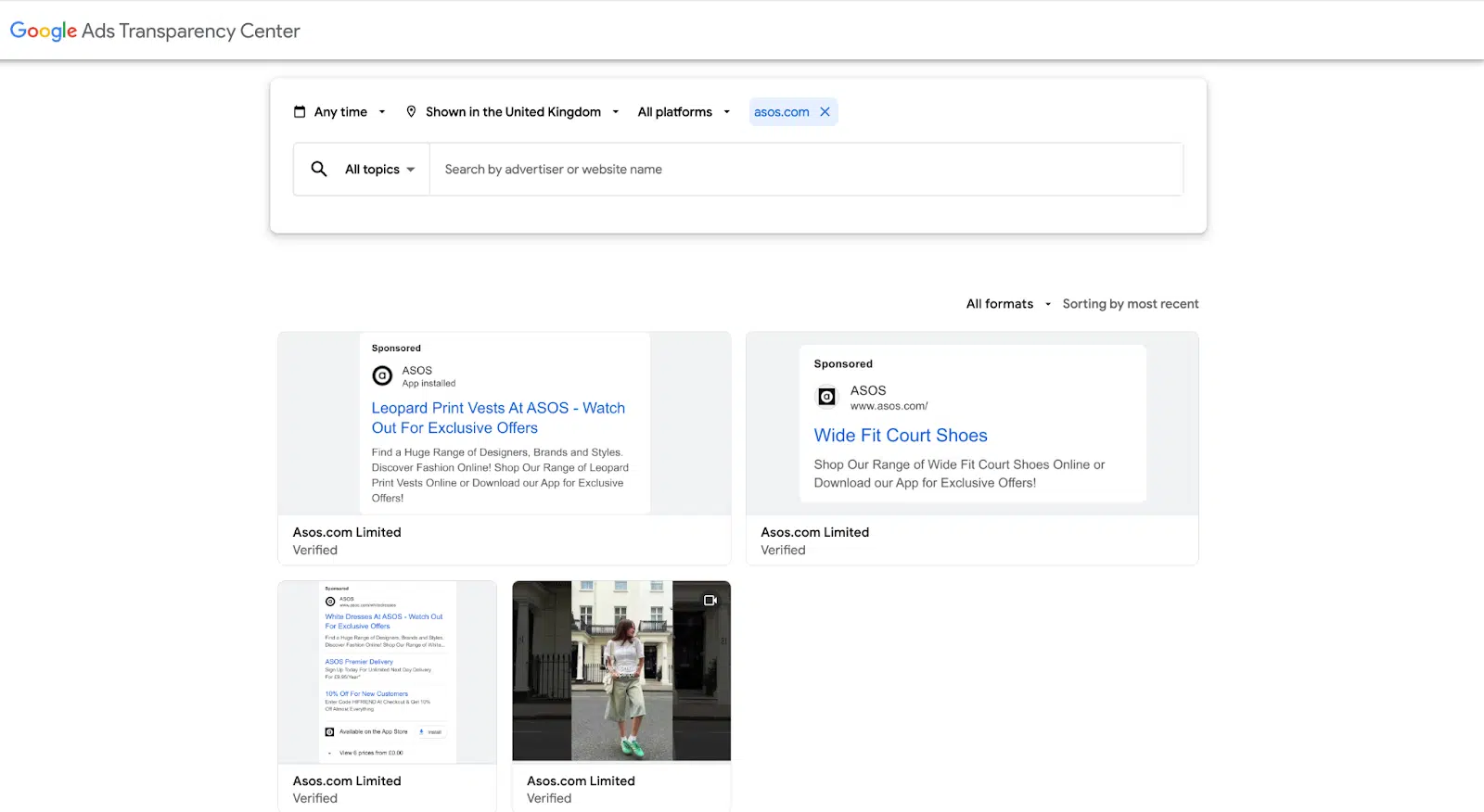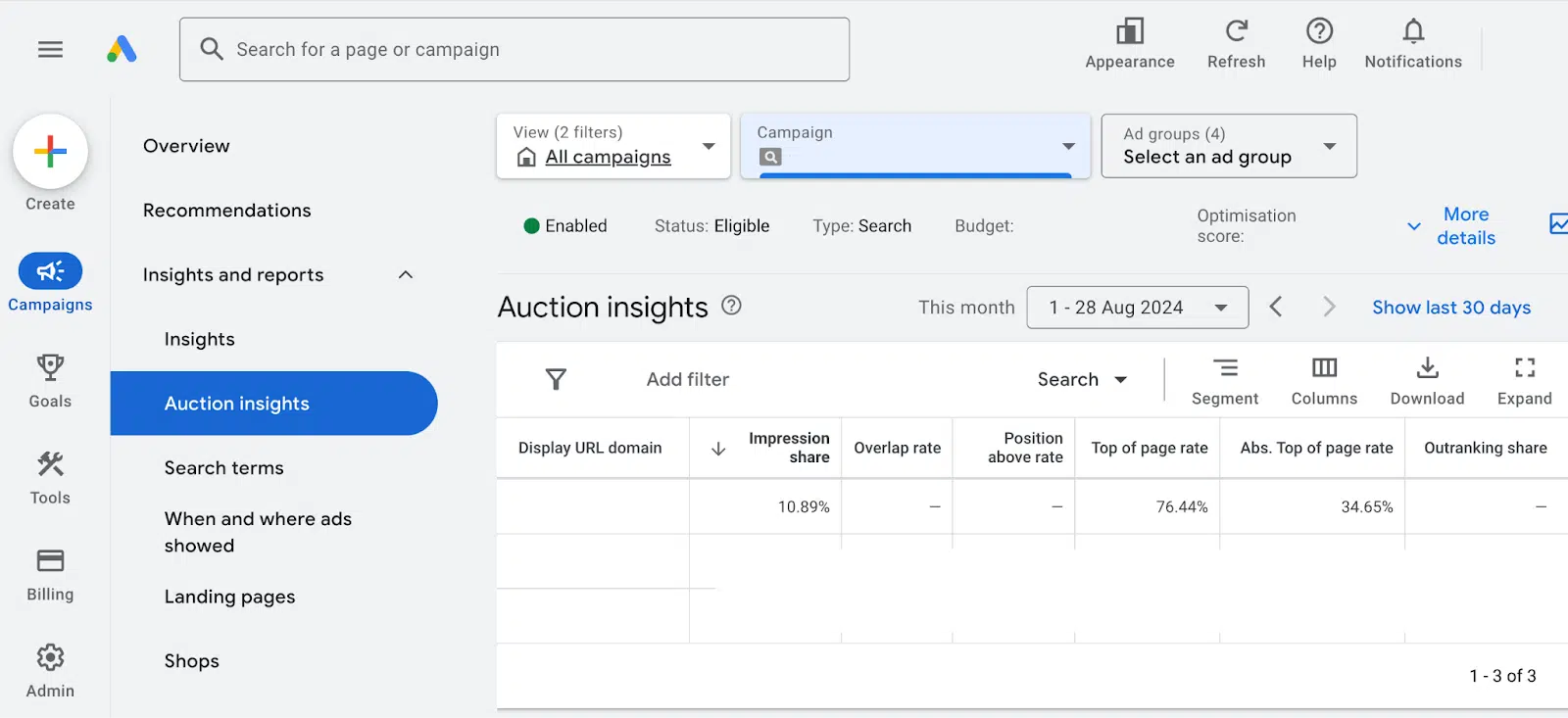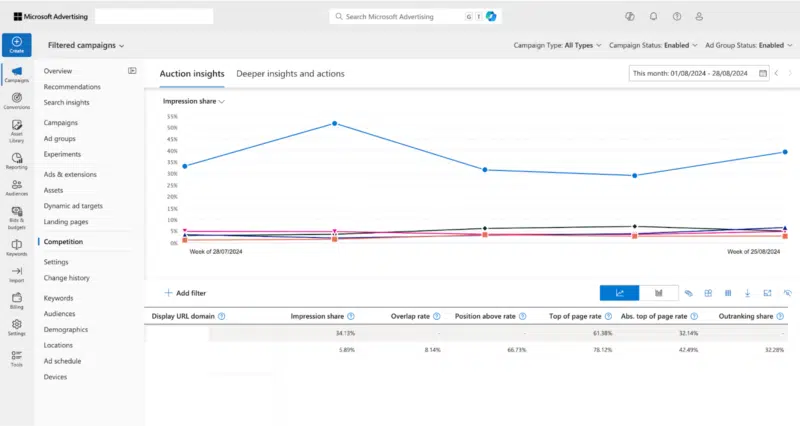How to do PPC competitor analysis
Monitor your PPC competitors, analyze their ad strategies and leverage insights to optimize your campaigns and post-click experiences.
Knowing what is going on with your PPC efforts is as important as knowing what your competitors are doing.
Monitoring your competitors’ activities can help you capitalize on their weaknesses, draw inspiration from their strengths and identify missed opportunities.
Rather than copying their actions, you collect information and insights to run more effective and efficient PPC campaigns.
Here is some guidance on how you can conduct your own PPC competitor analysis.
1. Check out the Google Ads Transparency Center
The Google Ads Transparency Center is a free and easy-to-use tool that allows you to search for a company and see what ads it has been running. (Only ads from verified advertisers are available in the Transparency Center.)

Covering Search, Shopping, YouTube and more, it offers filters including date range, location and ad type so you can hone in on your competitors’ activities. It can even tell you when the last time a particular ad was shown.
This information is valuable as it allows you to read and see the type of copy and creatives your competitor uses, allowing you to get a better picture of their ad strategy.
It is particularly useful when analyzing their display ads, which can be tricky to catch in the wild.
Dig deeper: How to benchmark PPC competitors: The definitive guide
2. Roleplay a potential customer
While breaking PPC etiquette, clicking on an ad and exploring your competitors’ offerings from the perspective of a potential customer is a great way to see what kind of experience they are offering.
By taking the steps of a potential customer (i.e., making a search, seeing an ad, clicking on an ad, seeing the landing page, reading through their page content, etc.), you can take note of several important information, including:
- What ad copy are they using? Is it relevant to the search term?
- What landing page are they using? Is it PPC-specific or just their homepage?
- What first impressions does the landing page give?
- How easy is their website to navigate?
- Is their CTA clear? What do they want PPC traffic to do?
This insight is useful for optimizing your campaigns and shaping your post-click strategy, ensuring that your PPC traffic is given the best experience possible once they are on your site.
We often focus on getting a click and not enough on what we can do to turn that visit into a conversion.
Look at what your competitor is doing with their post-click experience and see if there are any opportunities for you to improve yours.
3. Review your Auction Insights
Inside Google Ads, you’ll find a very helpful report called Auction Insights under the Insights and Reports section.
This report enables you to compare your performance to that of your auction competitors, offering you the type of campaign performance information that your competitors won’t openly discuss.

The metrics you will see in this report will depend on the type of campaign you are running, but the three that are universally applicable are:
- Impression share.
- Overlap rate.
- Outranking share.
Impression share (IS)
- This refers to the number of Impressions you received divided by the estimated amount of impressions you were eligible to receive.
- A low impression share could indicate issues with approval statuses and quality scores, but it could also mean that your targeting options have restricted your reach.
- Look through your statuses to ensure you’ve not got any unaddressed disapprovals and double-check that you’ve not implemented any unnecessary targeting restrictions.
Overlap rate
- This details how frequently your competitors’ ads were shown on the same results page as your own ads.
- This is an interesting metric as it allows you to gauge how often your target audience is seeing ads from both you and your competitor during the same search.
- Are you often being shown alongside your competitor? If so, what can you do to ensure that your ads stand out the most?
Outranking share
- This metric is the percentage of times that your ad ranked higher than other advertisers in the same auction.
- If you’re seeing that your competitors are regularly outranking you, look at what you can do to improve your Ad Rank including your bid strategy and ad relevance.
There is also a similar report in Microsoft Advertising, which offers the same metrics and can be found by selecting Competition within the Campaigns box.

Looking at both reports allows you to see if there are differences in competitors across the two platforms.
For example, while one competitor might outperform you on Google Ads, you might have the upper hand on Microsoft Advertising.
Dig deeper: 3 ways to target your PPC competitors’ audience
4. Use third-party tools
Many third-party tools are available that can provide further information about your competitors’ PPC activities, including keyword data and budget estimations.
These can be a great way to add further details to your competitor analysis, particularly when performing keyword gap analysis.
However, remember that unless you’ve got an overly friendly competitor who will give you direct access to analysis of their performance data, you won’t see 100% accurate competitor data via a third-party tool.
Analyzing your competitors’ PPC efforts
Remember that when conducting competitor analysis, you are looking for inspiration and ideas; we are not looking to create a carbon copy of what your competitors are doing.
By analyzing their efforts, we can spot missed opportunities and areas of improvement that we can implement into our own work, allowing us to run better PPC campaigns.
Dig deeper: When to use branded and competitor keywords in PPC
Contributing authors are invited to create content for Search Engine Land and are chosen for their expertise and contribution to the search community. Our contributors work under the oversight of the editorial staff and contributions are checked for quality and relevance to our readers. Search Engine Land is owned by Semrush. Contributor was not asked to make any direct or indirect mentions of Semrush. The opinions they express are their own.


